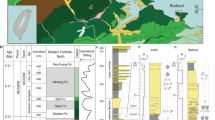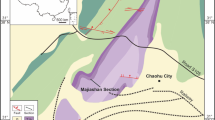Abstract
WHEN Sir Richard Burton discovered Lake Tanganyika in 1858 his companion, Speke, collected a number of shells from the shores. These proved to be Prosobranchs of types hitherto unknown in fresh water. Later investigations, notably those of the three Tanganyika expeditions, the first two under the leadership of J. E. S. Moore1 and the third under that of W. A. Cun-nington2, revealed in fuller detail the remarkable nature of the fauna with its great number of endemic species of fish, Crustacea, sponges and, above all, prosobranch Gastropoda. Cunnington lists 84 species of Gastropoda of which 76 are endemic. The majority, 72 species, are Prosobranchia and of these 68 are endemic. Moreover 58 species have a heavy, frequently ornamented, shell, in appearance much more like marine than freshwater species. Moore, elaborating a suggestion made originally by Giinther3, regarded these, and the other endemic species, as a relict fauna, the descendants of a diverse collection of marine species which lived in this region when Tanganyika was, as he maintained, an arm of the Indian Ocean. He described them as "halolimnic"species.
This is a preview of subscription content, access via your institution
Access options
Subscribe to this journal
Receive 51 print issues and online access
$199.00 per year
only $3.90 per issue
Buy this article
- Purchase on Springer Link
- Instant access to full article PDF
Prices may be subject to local taxes which are calculated during checkout
Similar content being viewed by others
References
Moore, "The Tanganyika Problem", London (1903).
Cunnington, Proc. Zool. Soc. Lond., 507 (1920).
Günther, Quart. J. Micro. Sci., 36, 271 (1894).
Smith, Proc. Malac. Soc., 6, 77 (1904).
Pelseneer, Rpt. Brit. Assoc., 602 (1906).
Hudleston, Geol. Mag., 1, 337 (1904).
Bourguignat, Ann. Sci. Nat. Zool. (1), 10, 1 (1890).
Fuchs, J. Linn. Soc. Lond. Zool., 40, 93 (1936).
Moore, Quart. J. Micro. Sci., 41, 159; 181 (1898); 42, 155; 187 (1899); Proc. Zool. Soc. Lond. (2), 461 (1901).
Digby, J. Linn. Soc. Lond. Zool, 28, 434 (1902).
Yonge, Sci. Rpts., G. Barrier Reef Exped., Brit. Mus. (Nat. Hist.), 1, 259 (1932).
Boycott, J. Anim. Ecol., 5, 116 (1936).
Peile, J. Conchol., 20, 292 (1937).
Yonge, J. Mar. Biol. Assoc., 21, 687 (1937).
Yonge, J. Mar. Biol. Assoc., 22, 453 (1938).
Hulbert and Yonge, NATURE, 139, 840 (1937).
Rights and permissions
About this article
Cite this article
YONGE, C. The Prosobranchs of Lake Tanganyika. Nature 142, 464–466 (1938). https://doi.org/10.1038/142464a0
Published:
Issue Date:
DOI: https://doi.org/10.1038/142464a0
This article is cited by
-
Trophic specialisation reflected by radular tooth material properties in an “ancient” Lake Tanganyikan gastropod species flock
BMC Ecology and Evolution (2021)
-
Endemism, speciation and adaptive radiation in great lakes
Environmental Biology of Fishes (1996)
-
Comparative aspects of adaptive radiation and speciation in Lake Baikal and the great rift lakes of Africa
Hydrobiologia (1991)
-
Digestion and the Production of Sulphuric Acid by Mollusca
Nature (1955)
Comments
By submitting a comment you agree to abide by our Terms and Community Guidelines. If you find something abusive or that does not comply with our terms or guidelines please flag it as inappropriate.



